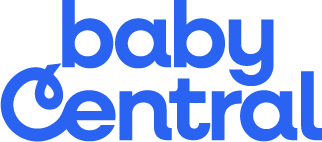One of the most common questions I get asked is “But… how much food should my baby actually be eating?”
If you're wondering that too, you're not alone. There’s no one-size-fits-all answer (I know — frustrating). Babies are wildly different in their appetites, growth, and readiness. Some eat with gusto from day one. Others take their sweet time. I have had one of each of these kids. Both are normal.
One study of over 500 infants found it took an average of 28 days from the first introduction of solids to consume >10ml of food daily, and 46 days before they were eating >100ml of solids (Hornell et al., 2001, p. 477). So, if your baby isn’t hoovering down bowls of food just yet — that’s okay. They’re still learning.
As a nutritionist (and mum of two), here’s what I want you to know about how much food to offer — and when to trust your baby’s lead.
First, milk is still the main source of nutrition (for now)
If your baby is around 6–12 months old, breastmilk or formula should still be their primary source of nutrition. Solids are important — especially for nutrients like iron and zinc — but they’re gradually complementing milk, not replacing it just yet.
Think of it this way:
- 6–9 months → Milk first, food second
- Around 9 months → The order and volume of milk starts to shift
- By 12 months → Food starts taking the lead, with milk continuing to play a supportive role
How much food should I offer?
Studies on healthy eating habits in children consistently show that how children eat is more important than what they eat (Haines et al., 2019, p. 125). Influences such as positive parental feeding experiences from a young age, eating together as a family, modelling healthy mealtime behaviours in the home, and nurturing the pleasure of eating all contribute to building a positive relationship with food in our little ones, which ultimately leads to better health outcomes later in life (Haines et al., 2019, p. 127).
Here’s a simple way to think about it:
Offer a variety. Let them decide what and how much to eat. Repeat.
This is known as the Division of Responsibility in Feeding, a concept developed by Ellyn Satter which outlines both a parents and child’s role when it comes to feeding (Ellyn Satter Institute, 2025). Parents should take leadership when it comes to what, when, and where to feed their little ones, and trust that their child knows how much and if they should eat any of the food provided at all (Ellyn Satter Institute, 2025).
Therefore, there is no exact portion size your baby “should” be eating.. But I know that’s not helpful when you're staring at a barely touched meal or wondering if four blueberries count as dinner.
To make it more tangible, here’s a rough guide of what some babies might eat at different stages — but remember, appetite will vary day to day (just like yours!) and we must respect that.
|
Age |
How Often? |
Rough Amount* |
|
|
6–7 months |
Once a day |
1–2 tablespoons |
|
|
8–9 months |
Twice a day |
2–4 tablespoons, moving toward small meals |
|
|
10–12 months |
Three times a day |
Around ½ cup of food per meal |
|
*Babies may eat more or less depending on the day, teething, growth spurts, illness, or how much milk they’ve had. Given there is such a variance across the day when it comes to ingestion of solids, it can be more helpful to look at food intake across the week instead. It is important to watch their cues closely to understand if they are still hungry, or full. Never force food into your babies mouth, or force them to “finish the bowl”, as pressure can result in challenging behaviours later on.
Signs your baby is full..
- Turning their head away from the spoon
- Acting disinterested and unengaged with the meal
- Hitting the spoon or plate away
- Going from exploring and eating, to playing / mashing
- Changes in facial expression: from concentration to mischievous
- Getting frustrated or upset (can also be a sign they want more food, or that they are overtired)
- Shifting and wanting to get out of the highchair
Here are some simple strategies to support your little one on their feeding journey..
- Implement a gentle routine – Aim for 2–3 solid meals at roughly the same time per day by 9/10 months, but don’t stress if it’s a bit off. Let them sit in the same place to eat each meal and turn off distractions such as the TV.
- Let baby lead – It’s okay to offer food and let them decide how much to eat. Read up on the Division of Responsibility.
- Avoid pressure – “Just one more bite” often backfires, resulting in negative impacts on healthy eating during childhood (Haines et al., 2019, p. 126).
- Model eating – Sit together when possible and eat with them (yes, even just a piece of toast), and put away distractions such as your phone. Studies show children who eat meals with their family consume more fruit and vegetables than those who don’t have regular family meals (Haines et al., 2019, p. 126).
- Don’t give up on rejected foods – Babies often need 6–15 exposures before accepting a new food (Ventura & Worobey, 2013, p. R404). And yes — if your baby throws every bit of broccoli off the highchair, it’s still a win. That’s exposure and it counts.
When should I seek extra support?
It’s always okay to reach out for reassurance — but especially if:
- Your baby is refusing most foods, most of the time
- They’re not gaining weight or falling off their growth curve
- Mealtimes feel consistently stressful for you or for them
- You’re unsure if their intake is meeting their nutritional needs
This is exactly what I support families with every day. You don’t have to navigate this alone.
There’s no perfect portion. No ideal number of bites. Just real babies learning, tasting, and exploring food at their own pace. Remember to offer, observe, trust, repeat. And if things feel confusing or frustrating — that’s okay.
Book a free 15-minute discovery call here if you'd like personalised guidance, or check out my 1:1 consults and group workshops — designed to help you feel calm, informed, and confident through every messy mouthful.
Kelly xx
Nutritionist | www.feedingthebump.com.au | IG: feeding.the.bump
This information is general in nature and not intended for personal health advice. Please consult your healthcare practitioner before making changes to yours or your little one’s health
References:
Ellyn Satter Institute (2025). The Satter Division of Responsibility in Feeding. https://www.ellynsatterinstitute.org/how-to-feed/the-division-of-responsibility-in-feeding/
Haines, J., Haycraft, E., Lytle, L., Nicklaus, S., Kok, F.J., Merdji, M., Fisberg, M., Moreno, L.A., Goulet, O., Hughes, S.O. (2019). Nurturing Children's Healthy Eating: Position statement. Appetite,137:124-133. https://doi.org/10.1016/j.appet.2019.02.007
Hörnell, A., Hofvander, Y., Kylberg, E. (2001). Introduction of solids and formula to breastfed infants: a longitudinal prospective study in Uppsala, Sweden. Acta Paediatrica, 90(5):477-82. PMID: 11430704.
Ventura, A.K., Worobey, J. (2013). Early Influences on the Development of Food Preferences. Current Biology, 23(9). https://doi.org/10.1016/j.cub.2013.02.037










How much food does my baby need? A Nutritionist’s Take on When (and What) to Offer